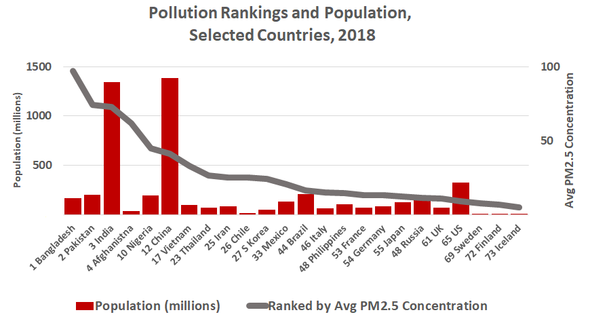Pollution Fight in Delhi Has Failed: India Times
Pollution Fight in Delhi Has Failed: India Times
Read the article from India Times.

World coal production increased in 2017 by 3.3 percent and accounts for 27.1 percent of the world total energy supply, second behind oil at 32.6 percent, reports IEA Energy Atlas; for electricity production, coal represents the highest share at almost 40 percent ahead of renewable sources at about 25 percent and natural gas at 23 percent (Source: IEA Energy Atlas and World Atlas)

India is a major coal producer and importer (Source: World’s Top Exports)

Many of the world’s most polluted cities are near Delhi (Source: AirVisual and Greenpeace, 2018)

India is not the most polluted nation, and nations with the most air pollution, as compared by estimated average PM2.5 concentration are in Asia; not all places measure air pollution, 73 nations were ranked, and PM2.5 measures inhalable particles 2.5 microns or smaller (Source: AirVisual and Greenpeace, 2018)